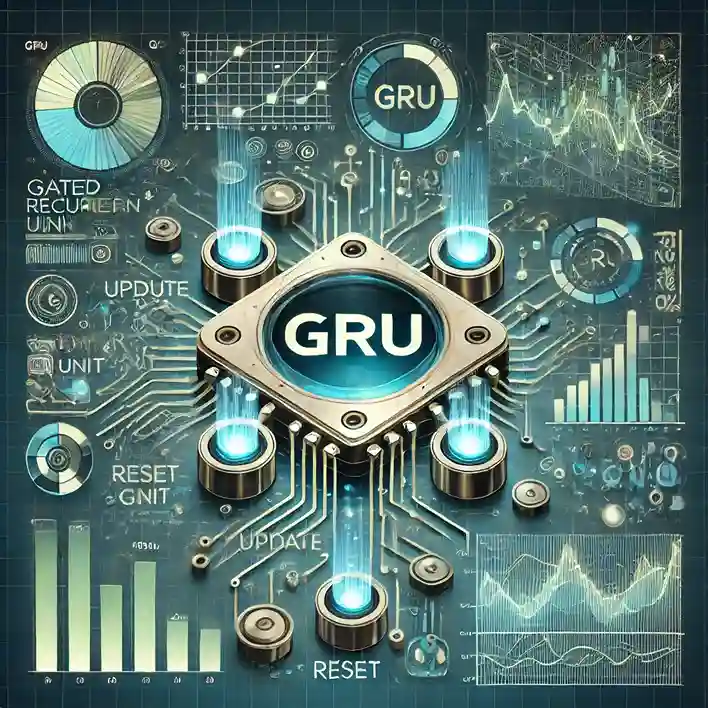Blogs / GRU Neural Network: Architecture, Applications, and Advantages
GRU Neural Network: Architecture, Applications, and Advantages

Introduction
Recurrent Neural Networks (RNNs) excel at modeling sequential data such as text, audio, and time series. However, traditional RNNs suffer from vanishing gradient and exploding gradient issues, making it difficult to learn long-term dependencies. To address these problems, advanced architectures like LSTM (Long Short-Term Memory) and GRU (Gated Recurrent Unit) have been developed.
The GRU neural network is a type of RNN designed for sequential data, distinguished by a simpler architecture compared to LSTM. GRU often achieves strong performance on complex tasks while requiring less computation time.
This article explores the GRU architecture, its advantages and disadvantages, applications, and differences from other RNN models.
GRU Architecture
1. GRU Structure
The GRU network was designed to overcome limitations of traditional RNNs and is similar to LSTM. While LSTM uses three gates to manage memory, GRU uses only two gates:
- Update Gate: Determines how much of past information to retain and how much new input to add, efficiently blending old and new data.
- Reset Gate: Controls how much past information to forget, allowing the model to focus on new inputs when old information is no longer relevant.
This simpler architecture reduces computational complexity compared to LSTM while maintaining strong performance.
2. Learning Process in GRU
During training, sequential inputs are fed into the GRU, and the model decides how much past state to keep and how much new information to integrate. This allows the GRU to learn long-term dependencies and make accurate predictions. For example, in natural language processing, GRU can capture sentence structure and semantic relationships to generate coherent responses.
GRU vs. LSTM
Although both GRU and LSTM address RNN limitations, they differ in ways that make one preferable over the other in certain tasks:
- Gates: LSTM uses three gates, while GRU uses two, resulting in faster computation for GRU.
- Memory: LSTM can store information for longer periods, whereas GRU’s simpler structure may sometimes limit long-term dependency learning.
- Performance: GRU often matches LSTM’s performance and, due to its simpler design, trains faster—ideal for scenarios where training speed is critical.
Advantages of GRU
1. Simplicity and Speed
GRU’s simpler architecture means fewer parameters and less computation than LSTM, leading to faster training—particularly advantageous with large datasets.
2. Long-Term Dependency Modeling
Despite its simplicity, GRU effectively models long-term dependencies in sequential data, making it suitable for time-dependent tasks.
3. Faster Convergence
GRU typically converges faster during training than LSTM, making it preferable in resource-constrained environments.
4. Reduced Overfitting
With fewer parameters than LSTM, GRU is less prone to overfitting, improving robustness on noisy data.
Applications of GRU
GRU networks are widely used due to their efficiency and simplicity. Key applications include:
1. Natural Language Processing (NLP)
GRU is used in machine translation, sentiment analysis, conversational modeling, and text generation, thanks to its ability to capture sequential dependencies and semantic relationships.
2. Time Series Forecasting
For stock price prediction, energy demand, or weather forecasting, GRU leverages past data for efficient and accurate future projections.
3. Speech Recognition
GRU models convert audio signals to text in voice assistants and speech-to-text applications.
4. Activity Recognition
GRU analyzes motion patterns for activity detection in sports, healthcare, and wearable devices.
5. Recommendation Systems
In personalized recommendation platforms, GRU learns user behavior sequences to deliver accurate content suggestions.
Challenges and Limitations of GRU
While GRU offers notable benefits, it has limitations:
1. Long-Term Dependency Limitations
GRU may struggle with very long-term dependencies compared to LSTM in some scenarios.
2. Large Data Requirements
Like other deep learning models, GRU needs substantial training data; insufficient data can reduce accuracy.
Conclusion
The GRU neural network is a pivotal RNN variant valued for its simplicity and effectiveness in many machine learning and deep learning tasks. Its ability to process sequential data and learn temporal dependencies makes it successful in applications like NLP, time series forecasting, and speech recognition.
Although GRU may sometimes underperform LSTM in capturing very long dependencies, its faster training and reduced complexity make it the preferred choice for many real-world tasks.
✨
With DeepFa, AI is in your hands!!
🚀Welcome to DeepFa, where innovation and AI come together to transform the world of creativity and productivity!
- 🔥 Advanced language models: Leverage powerful models like Dalle, Stable Diffusion, Gemini 2.5 Pro, Claude 4.5, GPT-5, and more to create incredible content that captivates everyone.
- 🔥 Text-to-speech and vice versa: With our advanced technologies, easily convert your texts to speech or generate accurate and professional texts from speech.
- 🔥 Content creation and editing: Use our tools to create stunning texts, images, and videos, and craft content that stays memorable.
- 🔥 Data analysis and enterprise solutions: With our API platform, easily analyze complex data and implement key optimizations for your business.
✨ Enter a new world of possibilities with DeepFa! To explore our advanced services and tools, visit our website and take a step forward:
Explore Our ServicesDeepFa is with you to unleash your creativity to the fullest and elevate productivity to a new level using advanced AI tools. Now is the time to build the future together!